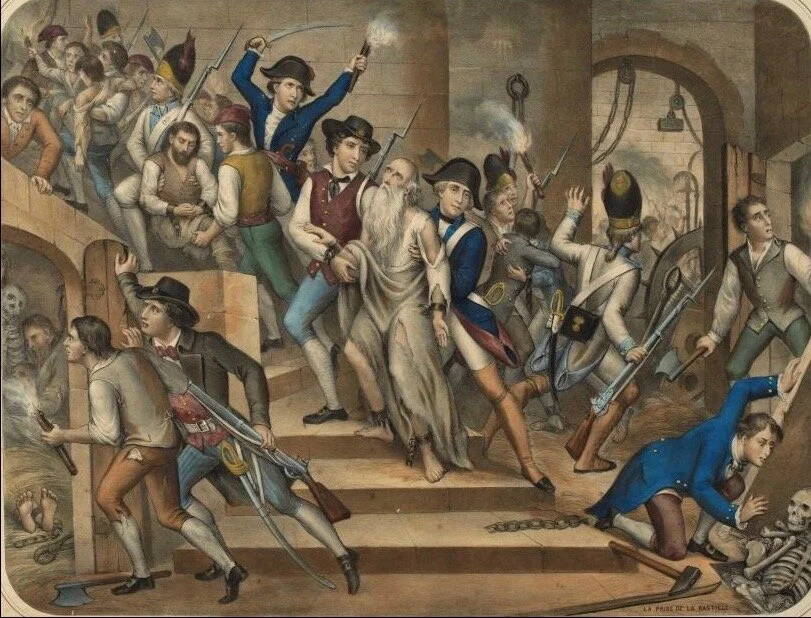On this day, le quatorze juillet, July 14, the French celebrate la Fête nationale, known in the English-speaking world as Bastille Day. It’s romantic to envision hordes of angry citoyens storming the medieval fortress-turned-political-prison as the event that set things in motion, but the spark that ignited the revolutionary fires happened several weeks earlier. On June 20, 1789, the deputies of the Third Estate took an oath of commitment to a national constitution, pledging not to disband until it was drafted and implemented. All 577 deputies, except for one who abstained in favor of the monarchy, signed the Tennis Court Oath, or Serment du Jeu de Paume.
But why “tennis court” oath? The road to the guillotine for Louis XVI was paved by poor judgments, big and small. Throughout the spring of 1789, the Estates-General had been meeting to address various crises plaguing France. Their progress was impeded because of representational bickering. The Estates-General comprised three groups representing the hierarchy of French society, minus royalty. The First Estate was the clergy; the Second Estate was the nobility; and the Third Estate was everyone else. In other words, the majority of France, from the bourgeoisie to the peasants. Not surprisingly, the Third Estate, renamed the National Assembly, had the least power. Reforms they proposed that threatened privileges enjoyed by the clergy and nobility could be overridden by the veto power of the First and Second Estates.
Tensions were running high when the King convened another legislative assembly meeting of the Estates-General at Versailles in June 1789. More squabbling ensued. Finally, on June 20, the National Assembly attempted to meet but found the doors to the meeting hall locked and guarded against them. They went instead to an indoor tennis court that had been used by Louis XIV where they took their oath “not to separate, and to reassemble wherever circumstances require, until the constitution of the kingdom is established and consolidated upon firm foundations….” Among the revolutionaries were the astronomer Jean-Sylvain Bailly, who administered the oath; Honoré Mirabeau; Maximilien Robespierre; and a certain Dr. Joseph-Ignace Guillotin.
Initially, Louis XVI agreed to small concessions and reforms but nothing that would unmoor the Ancien Régime.By June 27, and under pressure, he granted constitutional legitimacy to the National Assembly by ordering the deputies of the First and Second Estates to join them. It was too little, too late. Revolution was in the air.
On the afternoon of July 14, 1789, angry citizens tore into the Bastille, emblem of the monarchy’s abuse of power. At the time, there were only seven inmates at the Bastille: four forgers, two psychotics, and one libertine. Though the forgers were later rearrested, all seven were marched through the streets of Paris, triumphant symbols of freedom, including one of the lunatics, an Irishman who thought he was Julius Caesar.


